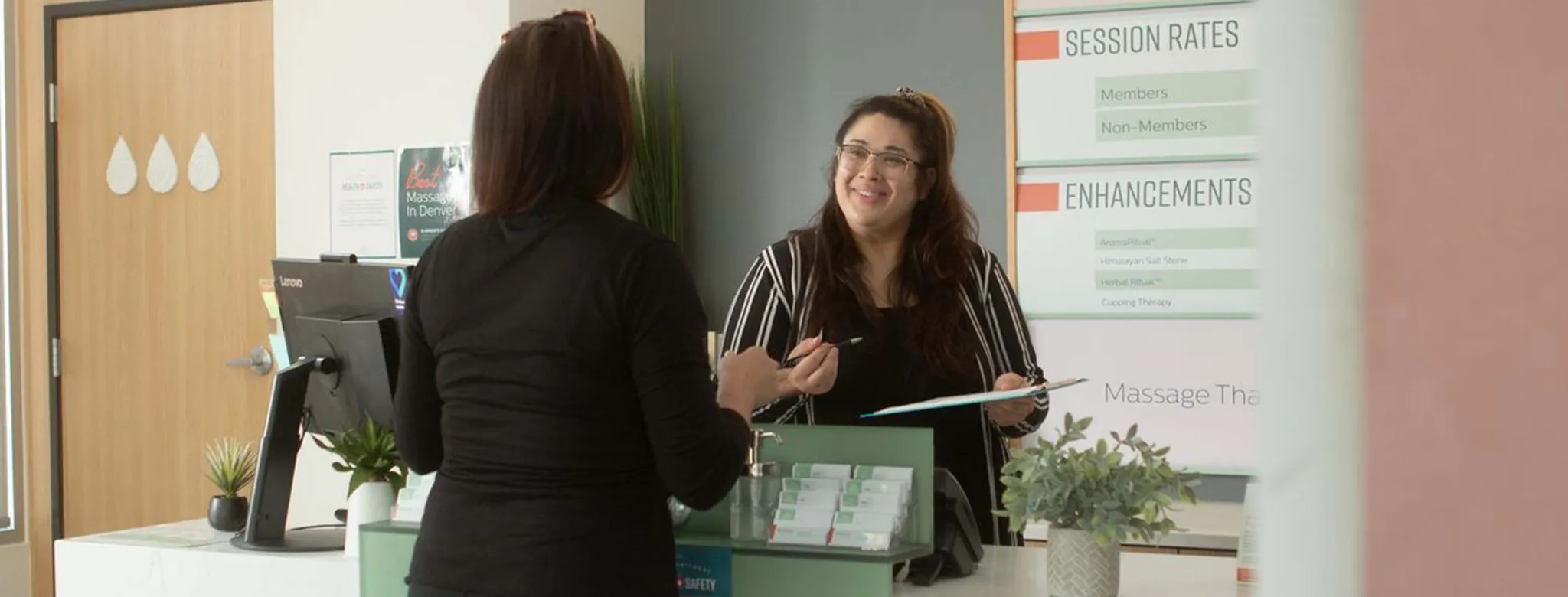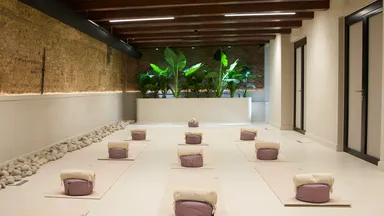
Which Growth Path is Right for Your Salon or Spa Business?
Last updated: September 1, 2023
This information contained herein does not constitute financial, legal, or other professional advice and is meant to be used solely for informational purposes. It does not take into account your specific circumstances and should not be acted on without full understanding of your current situation, future, and/or objectives by a qualified professional. Mindbody assumes no liability for actions taken in reliance upon the information contained herein.
It's no secret that the last couple of years have been a roller coaster for salon and spa owners. Unimaginable lockdowns—some lasting months—in 2020 led to an overall decline in revenues of an estimated 40% for the year. Yet subsequently, the demand for personal care, beauty, and wellness services has never been greater.
The Global Wellness Institute has predicted, for the spa sector, an annual growth rate of 17.2% from 2020 to 2025, with the gains in the overall wellness economy outpacing the global GDP by over 33%. We don't know for sure what role health and wellness will play in consumers' daily lives going forward, but the future certainly looks rosy.
In a recent survey of Mindbody spa and salon owners, 50% indicated that they were ready to start growing their businesses again. You may also be wrestling with this concept, but larger questions loom on how to make it happen. What does growth look like? Is it a better option to create an additional location, or to acquire a competitor? What's the best way to position your business for both short-term stability and long-term growth? Conversely, would it be better to focus on expanding your current business, and how? We'll review some of the options.
Opening another location
When you have outgrown your current facility, it may be time to consider an additional location. First, let's define some of the basic tenets of outgrown:
- You're operating as many hours as sensible, seven days per week
- Your revenue-producing stations are demonstrating productivity rates north of 65%
- There's no additional space that could be utilized for revenue production
If you can answer yes to these questions, then a second location could be the answer. There's a lot to consider here, and each situation will be different, but when it comes to finding "the spot," you don't want to be too close, or too far, from your current location. Most customers don't want to travel more than 8-12 kilometres from their home or work to visit a salon or spa with any frequency. You'll want to be able to leverage your current reputation in a neighbourhood that has some of your current clients, but also plenty of prospects. Some of your current clients will choose the new location for convenience, and that's good, as it will open up space in the appointment book at the current location for new demand. Just make sure you don't choose a location that will cannibalise too many clients from the current location because it's too close, and clients always want what's "newer."
Commercial buildouts are running close to $430 per square meter for standard grade finishes and are taking 5-6 months for even a modest-sized space—both of these metrics are almost 30% beyond what was expected in 2018 and 2019. It's also worth noting that operating two locations is not likely to create double the revenue of one location, and certainly not double the profits. While you can definitely recognise spreading some of your corporate overhead and marketing expenses across two locations instead of one, you'll probably need a higher headcount to manage the two separate locations, which may offset any savings. There will be some increases in buying power, but at the same time, higher overall expenses. However, having a second location is a first step to opening a third at some point, which is when you do start to see some beneficial economies of scale.
Acquiring another location
Given the rockiness of the last couple of years, and the current business challenges, some owners have decided they've had enough and are selling their spa and salon businesses and retiring. Purchasing a business can be a rapid way to scale your own business—saving tons of time and money on design, buildouts, equipment, and ramping up.
We'll segment this option into three subsets:
1. Purchasing a profitable business
This is certainly the quickest way to success. A profitable wellness business is probably profitable because it's well-operated and has systems, structure, and protocols to support it. In addition, it will have a robust database and marketing plan, a loyal client base, and reliable staff. All these features are highly desired, the only question becomes, how will this established brand fit with your existing business? Do both businesses have the same target client, values, and culture? These elements need to be a good fit for the purchased business to continue churning profits.
2. Purchasing a challenged business
This option will be less expensive and less certain of success. The challenged business likely lacks the underlying structural elements needed for a successful business; your existing operating standards may be just the solution. Or there may be more to the story. The business might have lacked vision, a clear identity, or value proposition that resonated with the target audience. The business reputation in the marketplace must be carefully examined so there aren't any unfortunate surprises. Inheriting the existing staff may feel like it will set you up for success, but you'll want to proceed with caution and invest a lot of time in training and communications. These businesses also tend to have challenged balance sheets, so look carefully and price accordingly.
3. Acquiring the site of a former business
This is often an easy solution. I'm talking about a former salon or spa that has been closed for at least a few months. It may be a sub-lease situation, or a landlord could be looking to make a deal. The furnishings and fixtures likely won't provide you with any depreciation opportunities, but if they're in good working order it will save some money on a brand-new buildout with equipment. On the other hand, if the space isn't ergonomic or functional, it can cost even more than a new buildout would to create a workable situation. A space that has been operated as a salon or spa business with a layout including treatment rooms, a client lounge, a changing area, reception, retail, back of house, with plumbing but without fixtures, can also provide an easy road forward. Paint, carpeting, and décor upgrades are not that costly and can make it look like new—complete with your own branding. You'll just want to consider whether your target audience is present and large enough to make it all worthwhile.
Expanding where you are
As mentioned earlier, it could be that the easiest and least risky way to grow your spa or salon business is to take a good hard look at your current operation. If you're not open 7 days per week, or at least 10-12 hours for a few days in a workweek, that's a logical first step. I know, no one wants to work on Sunday, and there are still some parts of the country where the Sunday demand hasn't yet been created, but it's a wide-open opportunity. In salons and spas that are open on Sundays, they're often the second busiest day of the week, and they have less drama!
Even if you're open as many hours as possible, are you scheduling all your available resources for all those hours? Probably not. Many salons and spas still operate with a single technician being matched to a treatment room or styling chair when double-shifting these resources can provide a tremendous revenue boost. And apart from the additional labour and some boosted treatment supply costs, you're paying the same rent and overhead against the additional revenue. Certainly, having sufficient staff continues to be a challenge, but it might pay off to put your efforts there rather than into building a brand-new facility.
You may also be able to convert some previously under-used spaces in the floor plan into revenue production areas with some minor construction or to incorporate some unattended wellness options such as guided meditation, red light therapy, halotherapy, and others into your service menu. Perhaps some of those under-utilised hours in treatment rooms can be used in this way, creating revenue without the labour expense of traditional treatments.



